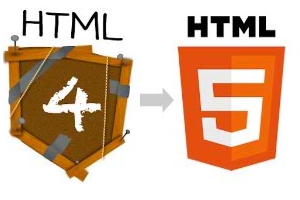Differences of HTML4 and 5
 HTML 5 is the upgraded version of the previously used language HTML 4.1, which was introduced in the year 1999. There are many differences when comparing the newer version with its precursor. Various features and differences may be visible only when the complete version is released, as the development is still in progress.
HTML 5 is the upgraded version of the previously used language HTML 4.1, which was introduced in the year 1999. There are many differences when comparing the newer version with its precursor. Various features and differences may be visible only when the complete version is released, as the development is still in progress.
The specification will be launched completely only when two implementations are done and a test suite should be used. The HTML 5 syntax is compatible with the older version but does not support the SGML features. Parsing rules including error handling are provided in the version.
The MathML and SVG elements can be used inside the document. Many new elements are introduced in HTML 5, such as section, article, aside, hgroup, header, footer, and nav. There are many more features which help in better designing of the pages.
There are new values for the type attribute of input element such as tel, search, url, email, date, month, week, time and many more. Many attributes are introduced which can be used with the existing elements. Some of them are, media attribute on a and area elements, hreflang, type, rel attributes on area element, charset on meta, target in base, autofocus on input, placeholder on input.
Some of the global attributes marking their debut are contenteditable, which indicates the editable area of an element, contextmenu to point a context menu, hidden etc. Along with new elements and attributes, many modifications are done in the existing elements.
Basefont, big, center, font, strike and tt are omitted in the version, as they are handled in a better way in CSS. Frame, frameset and noframes are omitted, as they damage the usability and accessibility. Acronym, applet, isindex, dir are omitted for providing limited functionality. There are so many other differences, but the article describes some of the basic ones.